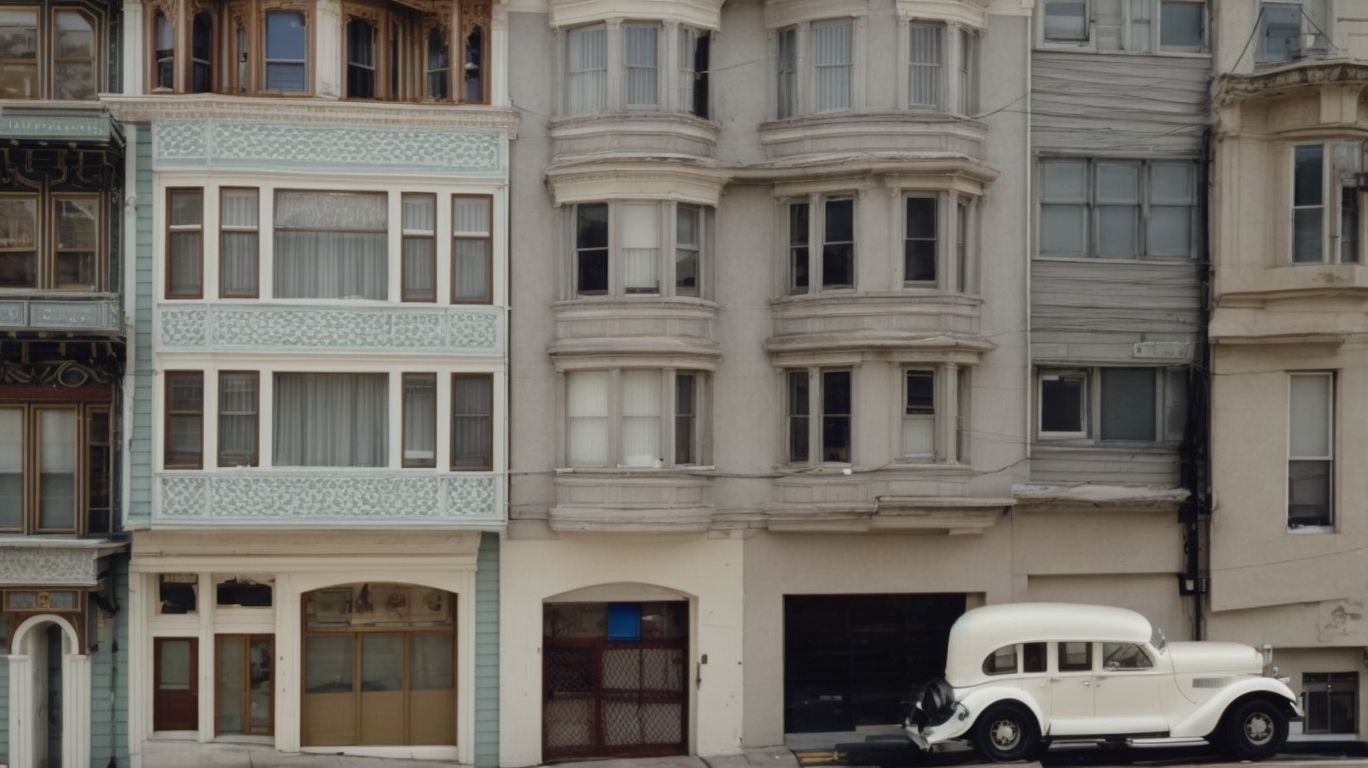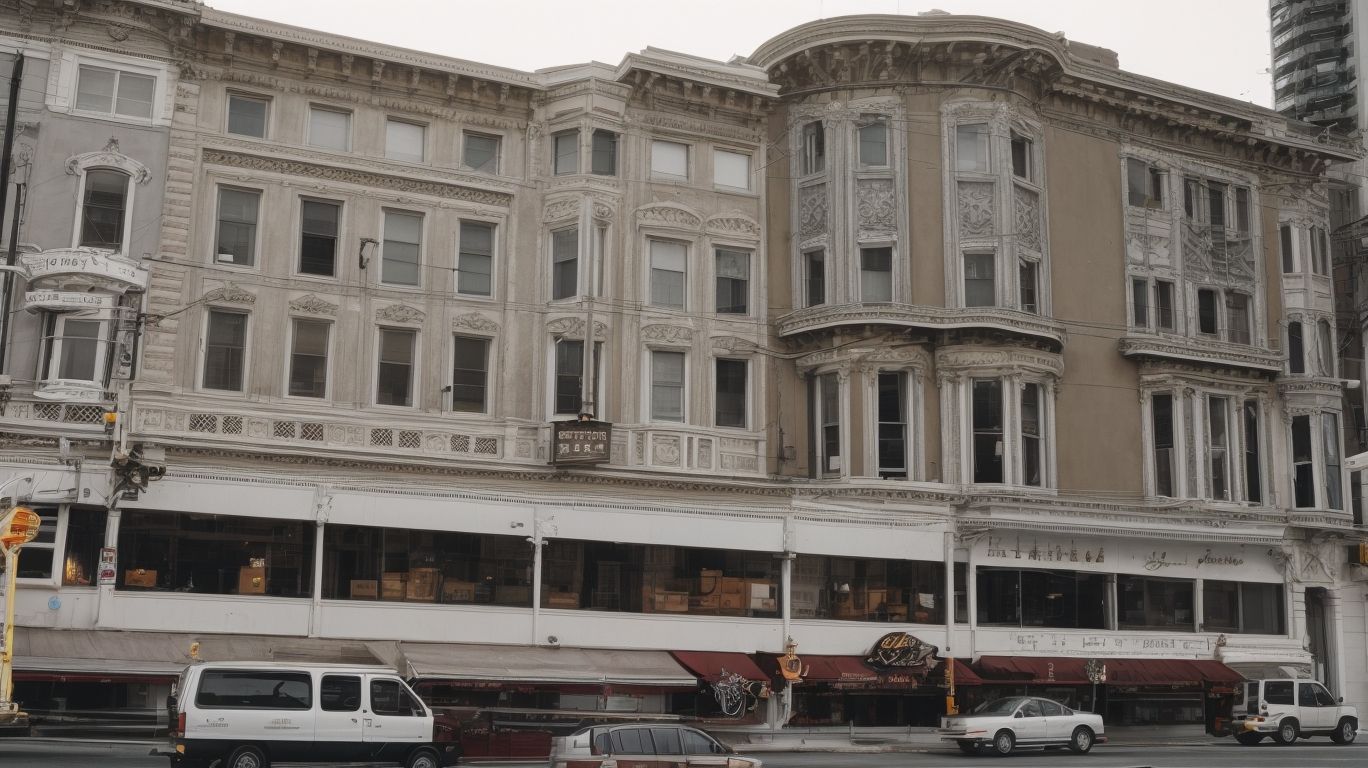
Successful Soft-Story Retrofit Case Studies in SF
Soft-story retrofitting is a crucial process for ensuring the safety and stability of buildings in earthquake-prone areas like San Francisco. But what exactly is soft-story retrofit, and why is it necessary?
In this article, we will explore the concept of soft-story buildings, the requirements for retrofitting in SF, and the benefits of undergoing this process. We will delve into several case studies of successful soft-story retrofit projects in the city, providing real-life examples of the positive impact of this essential structural upgrade.
What Is Soft-Story Retrofit?
Soft-Story Retrofit is a structural engineering and construction process that involves strengthening the existing building to enhance its resistance to seismic loads. This method specifically addresses the vulnerability of soft-story conditions, aiming to improve the overall structural integrity of the building.
By incorporating engineering solutions such as adding steel bracings, shear walls, or moment frames, the building’s ability to withstand lateral forces is significantly enhanced. This helps reduce the risk of collapse and ensures the safety of occupants during seismic events.
Seismic upgrades play a crucial role in retrofit projects as they help reinforce the structure, prevent disproportionate damage, and ultimately, mitigate the potential impact of earthquakes. Structural analysis is integral to assess the building’s behavior under seismic forces and ensure that the retrofit measures are effectively implemented.
What Are Soft-Story Buildings?
Soft-Story Buildings are structures characterized by open first floors, such as parking spaces, with large openings, making them susceptible to structural damage and collapse during seismic events.
The vulnerability of these buildings stems from the lack of sufficient lateral support, which can lead to excessive swaying and potential failure. This makes them a significant concern in seismic zones, posing risks to occupants and neighboring structures.
In response to this, building codes have been strengthened to enforce retrofitting and construction standards aimed at minimizing the seismic vulnerability of soft-story buildings. These regulations are crucial in ensuring the safety and resilience of these structures in the face of potential seismic activity.
Why Is Retrofitting Necessary?
Retrofitting is necessary to ensure the seismic resilience of existing buildings, complying with safety regulations and minimizing the risk of structural failures during earthquakes.
It is imperative to evaluate the vulnerability of older structures through a comprehensive risk assessment, identifying potential weaknesses and addressing them with targeted safety measures.
Retrofitting plays a crucial role in reinforcing existing buildings, upgrading their structural integrity, and implementing design modifications to align with current seismic standards. By proactively retrofitting structures, the potential impact of seismic events can be significantly reduced, ultimately safeguarding lives and property in earthquake-prone regions.
What Are The Requirements For Soft-Story Retrofit In SF?
Soft-Story Retrofit in San Francisco (SF) is mandated for buildings constructed before 1978 with 5 or more units, exhibiting soft-story conditions. This requires building owners to obtain necessary permits for compliance with retrofit regulations.
The city of San Francisco requires building owners to assess whether their structures fall within the specified criteria for soft-story retrofit. This involves a thorough examination of the building’s age, unit count, and structural design to determine the necessity of retrofitting.
Once confirmed, building owners are responsible for initiating the permitting procedures. This involves securing the required documentation and approvals to ensure compliance with the retrofit regulations set forth by the local authorities.
Buildings Built Before 1978
Soft-Story Retrofit applies to buildings constructed before 1978. This necessitates the involvement of engineering firms and contractors to execute retrofitting projects according to established guidelines and standards.
The construction year of a building plays a crucial role in determining the retrofitting requirements. Older buildings, such as those built before 1978, often lack the structural provisions required to withstand seismic activity. This makes them more vulnerable in the event of an earthquake, highlighting the need for retrofitting.
Engineering firms and contractors are instrumental in assessing the structural integrity of these buildings. They design and implement retrofit solutions that comply with local building codes, ensuring the safety and stability of these structures. Their expertise is vital for the success of these projects.
Buildings With 5+ Units
Soft-Story Retrofit is mandated for buildings with 5 or more units, aiming to enhance their seismic performance and structural resilience through retrofitting measures tailored to the specific building performance requirements.
The unit count of a building significantly influences its vulnerability to seismic events. Buildings with higher unit counts often require more comprehensive retrofitting solutions to address their unique structural needs.
By tailoring retrofit measures to specific building performance requirements, the seismic resilience of these structures can be significantly improved. Strengthening techniques such as bracing and shear wall installation are crucial in enhancing the overall structural integrity of multi-unit buildings, ultimately ensuring their safety and protection during seismic events.
Buildings With Soft-Story Condition
Soft-Story Retrofit is essential for buildings exhibiting soft-story conditions, involving structural engineering interventions focused on foundation reinforcement and structural elements to mitigate seismic vulnerabilities.
Soft-story retrofit projects are vital for ensuring the safety and stability of buildings in areas prone to earthquakes. This involves utilizing structural engineering expertise to identify and implement effective foundation reinforcement and structural element enhancements. By addressing weak points in a building’s design, such as open ground floors or oversized windows, these interventions strengthen the overall structural integrity and reduce the risk of collapse during seismic events.
Incorporating seismic retrofit measures can greatly improve a building’s resilience against potential earthquake damage, providing enhanced protection for occupants and assets. This makes it critical for buildings in seismic-prone areas to undergo soft-story retrofit projects.
What Are The Benefits Of Soft-Story Retrofit?
Soft-Story Retrofit offers numerous benefits, including increased safety, reduced damage during earthquakes, and cost-effective solutions that contribute to the sustainability and resilience of buildings.
These retrofit solutions not only enhance the structural integrity of a building, but they also minimize the potential for displacement and loss of life in the event of a seismic event.
By reinforcing vulnerable areas, such as ground floors with large openings, soft-story retrofit measures can significantly reduce the risk of structural failure and collapse.
The implementation of retrofit solutions is a proactive and cost-effective approach to safeguarding communities and preserving existing urban infrastructure, thereby promoting long-term sustainability and resilience in the face of seismic hazards.
Increases Safety
Soft-Story Retrofit significantly increases the safety of buildings, aligning with stringent building codes, and promoting collaboration among stakeholders to enhance public safety and community resilience.
This proactive measure not only ensures structural resilience but also facilitates a safer living environment for residents. It exemplifies the shared responsibility between building owners, engineers, and local government in safeguarding communities from potential seismic hazards.
By integrating this approach, buildings can withstand earthquakes more effectively, mitigating risks and minimizing potential damage. The importance of Soft-Story Retrofit lies in its ability to foster a collaborative approach that prioritizes the safety and well-being of the public.
Reduces Damage During Earthquakes
Soft-Story Retrofit effectively reduces damage to buildings during earthquakes, addressing structural vulnerabilities and embracing innovative seismic retrofitting techniques to minimize potential damage.
This approach plays a crucial role in mitigating the vulnerability of buildings with weak first floors, thereby significantly improving their resistance to seismic forces.
By incorporating innovative strengthening techniques such as adding shear walls, using steel frames, and installing braces, soft-story retrofitting effectively fortifies the building’s structural integrity.
These innovative retrofitting approaches reinforce the building’s ability to withstand and minimize the impact of earthquake-induced ground motions, making them more resilient to potential damage.
Increases Property Value
Soft-Story Retrofit contributes to the increase in property value, offering a positive return on investment (ROI) for building owners through the implementation of best practices in retrofit projects.
Soft-Story Retrofit addresses structural vulnerabilities and improves building resilience. This not only enhances property safety and stability, but also adds to its market appeal.
As a result, building owners can potentially see a higher rental or resale value, providing a significant ROI. Professional services, such as thorough engineering assessments and expert project management, are crucial for effective execution of the retrofit and maximizing its value enhancement potential.
Case Studies Of Successful Soft-Story Retrofit In SF
The successful implementation of Soft-Story Retrofit in San Francisco is exemplified through various case studies, providing valuable insights, and lessons learned in the domain of seismic retrofitting.
These case studies offer a deeper understanding of the challenges faced and the strategies employed in successful retrofit projects. By examining the specifics of each case, such as building type, community engagement, and structural solutions, stakeholders can gain practical knowledge that can be applied to similar projects.
The documentation of these case studies also contributes to the broader body of knowledge in the field of seismic retrofitting, fostering continuous improvement and innovation in creating safer urban environments.
The Fillmore Center
The Fillmore Center stands as a prominent case study of successful Soft-Story Retrofit in the residential sector, highlighting the effective implementation of steel frames and retrofit solutions tailored to the building’s unique requirements.
This project showcased the seamless integration of steel frames, offering structural reinforcement while preserving the architectural integrity of the building.
The tailored implementation of retrofit solutions at The Fillmore Center addressed the specific vulnerabilities of its soft-story configuration, ensuring enhanced resilience against seismic events. By leveraging steel frames, the retrofit not only bolstered the building’s structural stability but also provided a cost-effective and efficient solution that minimized disruption to the residents during the implementation process.
The Hamilton
The Hamilton represents a compelling case of successful Soft-Story Retrofit in the commercial domain, showcasing the effective utilization of concrete-based retrofitting methods to enhance structural resilience and seismic performance.
This innovative approach has significantly strengthened the building’s capacity to withstand seismic forces, making it more secure for its occupants and reducing the potential for damage during earthquakes.
The use of concrete retrofitting has not only improved the structural integrity of the building but also serves as a model for other commercial structures seeking to mitigate seismic risks. The success of The Hamilton’s retrofit serves as a testament to the positive impact and effectiveness of concrete-based retrofitting methods in enhancing the seismic performance and resilience of commercial buildings.
100 Van Ness
The Soft-Story Retrofit at 100 Van Ness serves as a compelling example in the context of multi-family buildings, highlighting the strategic use of wood construction and its positive impact on building performance and seismic resilience.
This retrofit illustrates how wood construction can effectively address the structural vulnerabilities of multi-family buildings, offering an efficient and cost-effective solution. Wood’s inherent strength and flexibility contribute to improved seismic performance, reducing the risk of building damage during earthquakes.
The use of wood in retrofitting projects aligns with sustainable construction practices, promoting environmentally-friendly and resilient building design. 100 Van Ness showcases the potential of wood construction in bolstering the structural integrity and seismic resilience of multi-family buildings, setting a precedent for future retrofitting endeavors in urban areas prone to seismic activity.
The Paramount
The successful Soft-Story Retrofit at The Paramount underscores the significance of rigorous risk assessment, foundation reinforcement, and anchorage strategies in achieving comprehensive seismic resilience for the building.
These crucial elements ensure that the structure is equipped to withstand the forces generated by seismic activity, safeguarding its occupants and minimizing potential damage.
The thorough risk assessment process identified vulnerable areas, allowing for targeted foundation reinforcement to enhance the building’s structural integrity. The implementation of advanced anchorage strategies further fortifies the structure, mitigating the risk of collapse during seismic events.
This holistic approach showcases the paramount importance of proactive measures in preparing buildings to withstand unpredictable natural disasters.
The Towers
The Towers exemplify a collaborative approach to successful Soft-Story Retrofit, emphasizing sustainable retrofitting practices and the collective efforts of stakeholders in enhancing the building’s seismic resilience.
This comprehensive approach involves architects, engineers, contractors, and building owners working together to implement innovative yet sustainable retrofitting strategies. By leveraging their expertise and resources, the stakeholders strive to minimize the environmental impact while ensuring the structural integrity of the building.
This concerted effort not only enhances the safety of the occupants but also reflects a collective commitment to sustainable development and disaster resilience. The collaboration extends beyond physical retrofitting to encompass community outreach and education initiatives, fostering a culture of preparedness and cooperation among all involved parties.
The Argenta
The Argenta showcases the successful application of engineering standards, innovative project management, and retrofitting solutions, underscoring the importance of adherence to industry standards and innovative approaches in retrofit projects.
This soft-story retrofit project exemplifies how a comprehensive understanding of structural engineering principles and cutting-edge project management techniques can lead to successful outcomes.
The Argenta’s attention to detail and commitment to implementing innovative solutions have set a high standard for future retrofitting endeavors. By prioritizing efficiency and safety, the project demonstrates the significance of employing forward-thinking strategies in structural upgrades, which can serve as a valuable model for similar ventures in the industry.




No Comments